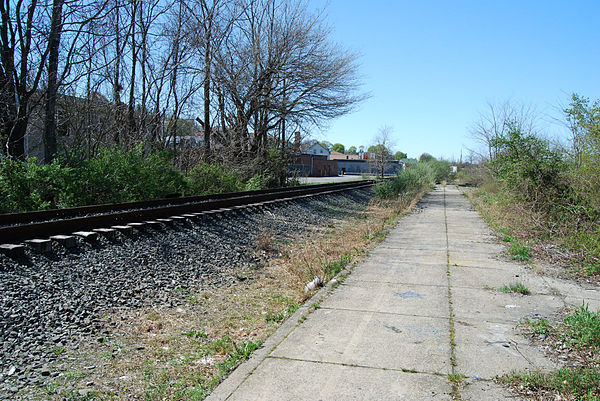It’s hard to believe, but this is where the Fall River train station will be built.
Adapted from Robert Whitcomb’s “Digital Diary,’’ in GoLocal24.com
The best news for southeastern New England in a long while comes from Massachusetts Gov. Charlie Baker, who, fulfilling a campaign promise, is dedicating more than $1 billion in state bond revenue to the long-delayed extension of MBTA service to Fall River, New Bedford and Taunton. The plan is to have the project, called South Coast Rail, completed by late 2023. Taunton, Fall River and New Bedford are the only Massachusetts cities within 50 miles of Boston that don’t have commuter rail access to Boston.
The extension will make it easier for southeastern Massachusetts and eastern Rhode Island to share in the wealth and economic development of Greater Boston while making southeastern Massachusetts’s housing, whose costs are generally much lower than Boston’s and its suburbs’, more accessible to commuters. (And Rhode Islanders in Tiverton, Little Compton, on Aquidneck Island and Bristol may find it easier to take the train to Boston from Fall River than from Providence.)
In the long run, South Coast Rail will help make southeastern New England more prosperous, help restrain traffic congestion and reduce car traffic’s strain on the environment.
In any case, much needs to be done to get more people off the roads. Consider that a MassINC Polling Group recent survey of 1,200 Bay State registered voters found that 67 percent say that they’ve left work earlier or later to avoid Greater Boston’s traffic crush. Sixty-three percent describe themselves as angry /frustrated about the delays on the roads and the MBTA. The pollsters found:
"Among those with commutes longer than 45 minutes, about half (51%) have thought about changing jobs; 30% have considered leaving their area altogether.’’ The booming Metro Boston economy, fueled by technology, health care, finance and higher education, has kept the jobless rate low (latest: 3 percent) but eventually traffic congestion might cause many to leave the area. The best answer is more and better commuter rail service.
Please hit this link to learn more.










